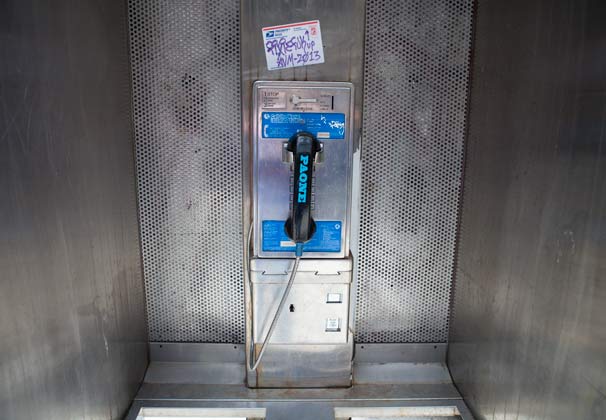
For most people, history is something to be contained within the confines of a glass box, something to be sealed, gawked at and controlled. For New Yorkers, however, history is in every crack of the pavement.
A new exhibit and advertising campaign by Manhattan-based independent advertising agency Droga5 takes New Yorkers back in time to the year 1993. In “Recalling 1993,” which opened in late March, over 5,000 of the city’s pay phones are transformed into a time machine in affiliation with the New Museum’s exhibit, “NYC 1993: Experimental Jet Set, Trash and No Star.” Passersby can pick up a pay phone, dial a toll-free number and listen to the history of the area where they’re standing.
“The idea for ‘Recalling 1993’ began with the New Museum’s current exhibition, which features art created and exhibited in New York City in 1993,” said Ray Del Savio, associate creative director at Droga5. “The New Museum exhibition reflects that time of turmoil and helps to transport you back to what New York City was like back then. In order to promote the exhibition, Recalling 1993 brought the visceral feeling that 235 Bowery evokes out onto every street corner of Manhattan using one of the last relics of that time: the pay phone.”
To encompass the vast number of stories and experiences that defined New York City in 1993, each individual payphone provides a highly specific view of that particular street and area. The pay phone located on Third Avenue and 11th Street, just a few blocks down from the Third North residence hall, features the insight of Lisa Keller, a history professor at SUNY-Purchase.
“Rent in SoHo has doubled in the last 20 years,” Keller said in the audiotape. “[In 1993], you couldn’t drive half a block down Houston Street without someone throwing a newspaper at your windshield … squeegee men were everywhere.”
The era of Rudy Giuliani and squeegee men, people who wiped down paused cars and then demanded money, was one troubled with petty crime and violence, according to Keller.
Other payphone locations near NYU include 8 Washington Square North, which discusses life in Greenwich Village in 1993, 51 W. Fourth St., which delves into the SoHo way of life in 1993, and 721 Broadway, next door to the NYU Student Health Center.
CAS freshman Dominic DeLuque is interested in dialing in because he was born in 1993.
“A lot of DIY-activism was happening [in 1993] around things like third-wave feminism and the AIDS crisis, and it’s reflected in the art that was being made,” DeLugue said. “There’s so much history in New York that people walk on top of and around every day, and the ’90s was sort of New York’s last really gritty decade.”
To get a fresh perspective on a time just before your own, visit the exhibit at the New Museum, or any pay phone in the city through May 26 and dial 1-855-FOR-1993.
A version of this article appeared in the Monday, April 8 print edition. Helen Holmes is deputy features editor. Email her at [email protected].

























































































































































